1. Transversal Line
2. Equal Alternate Interior Angles
3. Alternate Exterior Angles
4. Corresponding Angles
Being able to understand what’s going on when looking at alternate interior angles examples along with alternate exterior angles, really starts with learning about what is known in Math as a Transversal Line.
Transversal Line
If we have two individual straight lines, they can both be crossed over by a third straight line, which is called a “Transversal” line.
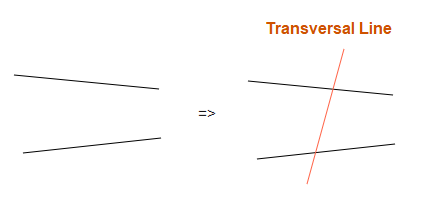
This transversal line crossing through 2 straight lines, results in creating 8 angles.
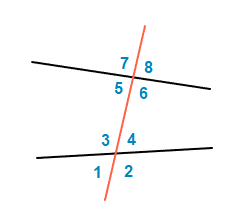
In the image above, angles 3, 4, 5 and 6 are the INTERIOR angles.
From these interior angles, angles 4 and 5 are ALTERNATE INTERIOR angles.
The angles 3 and 6 are also ALTERNATE INTERIOR angles.
These are angles that are INTERIOR, and also on different/alternative sides of the red transversal line that is present.
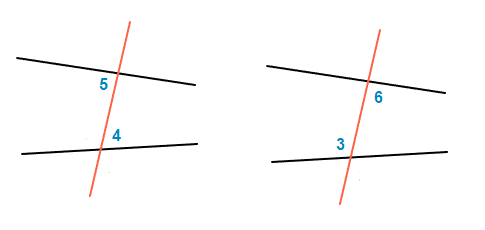
Equal Alternate Interior Angles Examples
When a Transversal line crosses through 2 straight parallel lines, the interior alternate angles that are created will be equal alternate interior angles.
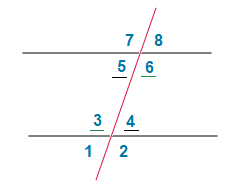
Angle 4 = Angle 5 , Angle 3 = Angle 6
Consecutive Interior Angles
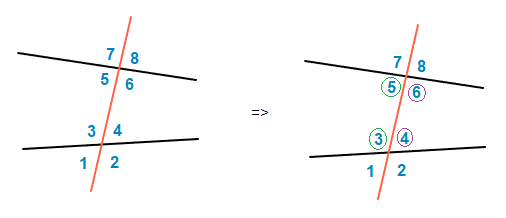
Angles 4 and 6 together in this situation are known as “consecutive interior angles”.
As are angles 3 and 5.
They are interior angles, both on the same side of the Transversal line as one another. Thus they are called “consecutive”.
When a Transversal line crosses parallel lines, the consecutive interior angles add up to 180°.
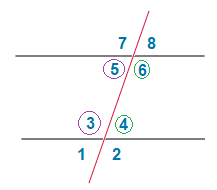
Angle 3 + Angle 5 = 180° , Angle 4 + Angle 6 = 180°
Alternate Exterior Angles
It’s the case that exterior angles are also created when a transversal line crosses 2 separate straight lines.
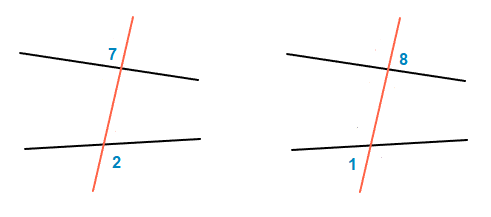
Corresponding Angles
Corresponding angles are a mix of both an interior angle, and an exterior angle.
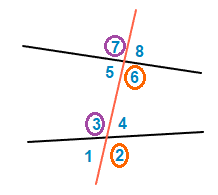
In the above image, angles 3 and 7 together are corresponding angles, as are angles 2 and 6.
But also, angles 4 and 8 together and angles 1 and 5 together are corresponding angles too.
When the lines being crossed by the Transversal line are parallel, then the corresponding angles are equal to each other in size.
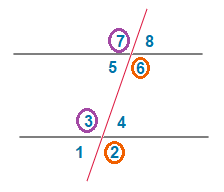
Angle 1 = Angle 5 , Angle 2 = Angle 6
Angle 3 = Angle 7 , Angle 4 = Angle 8